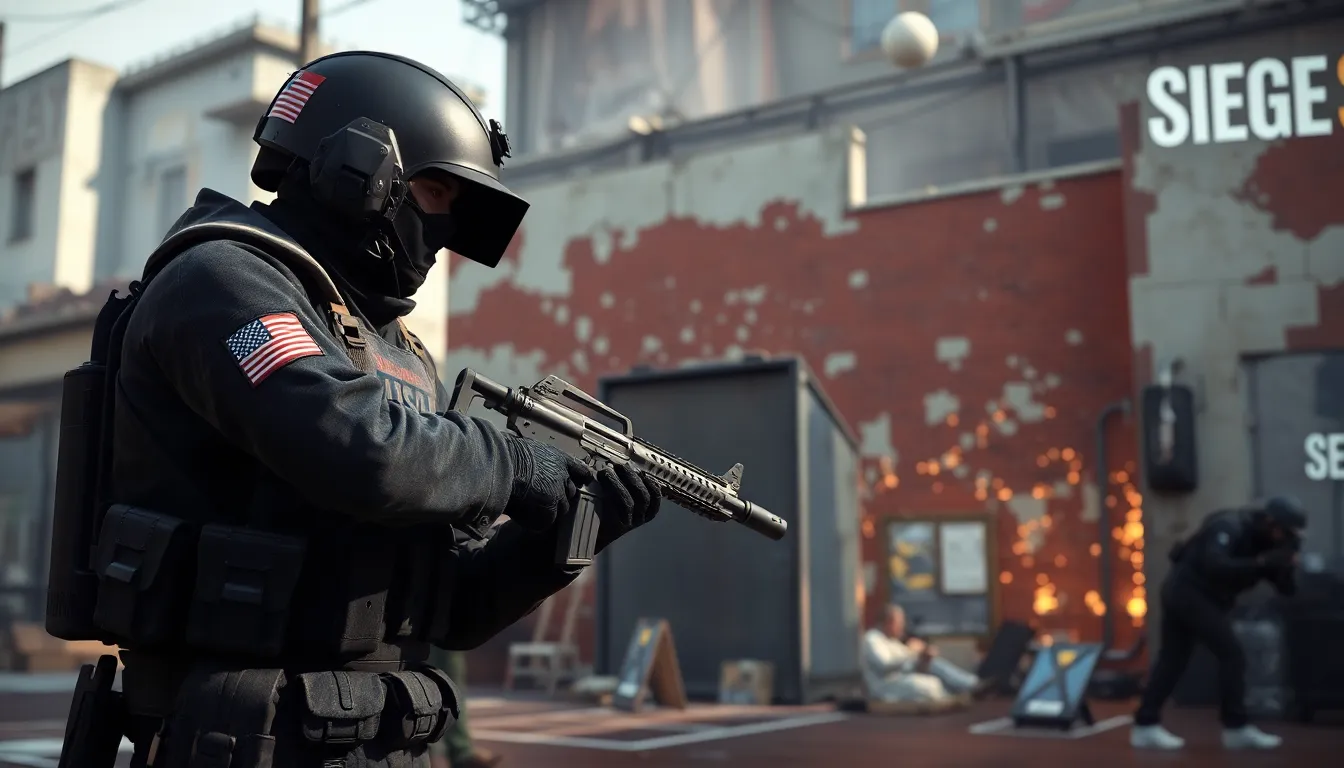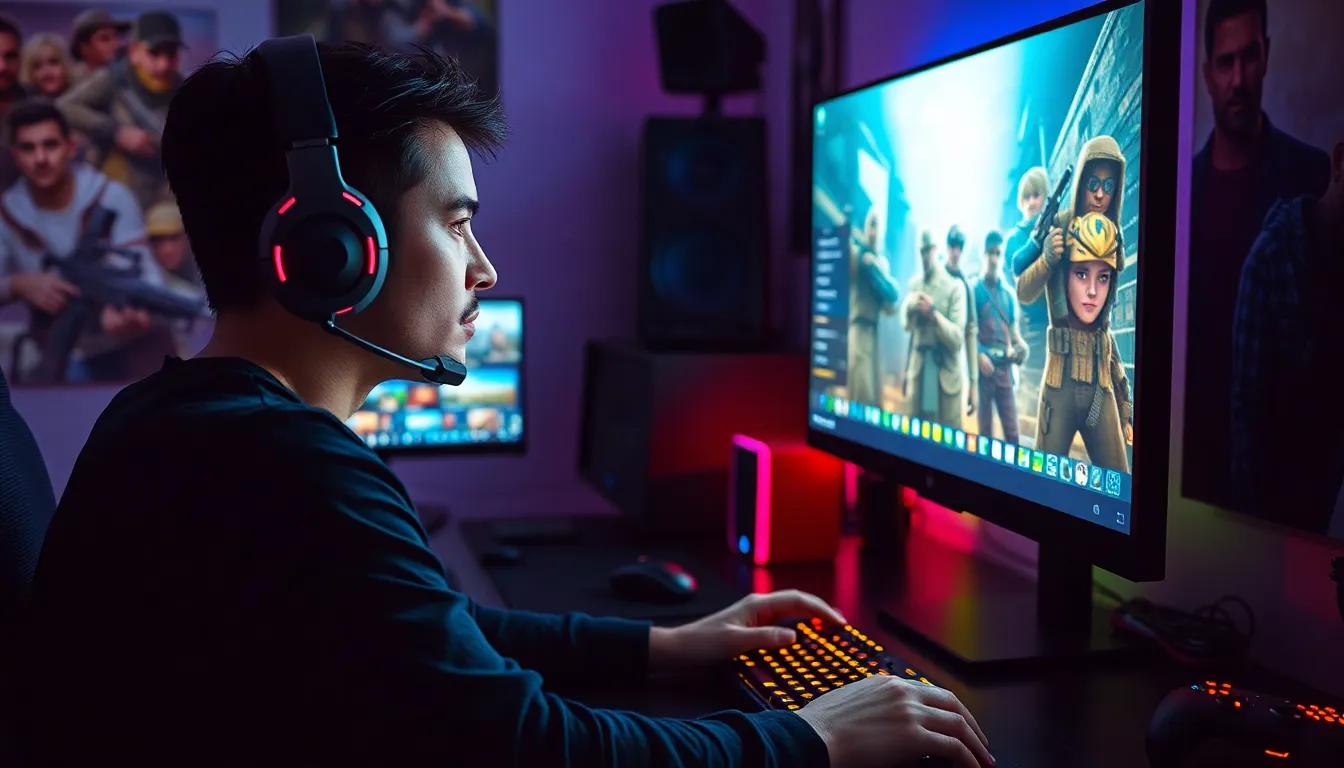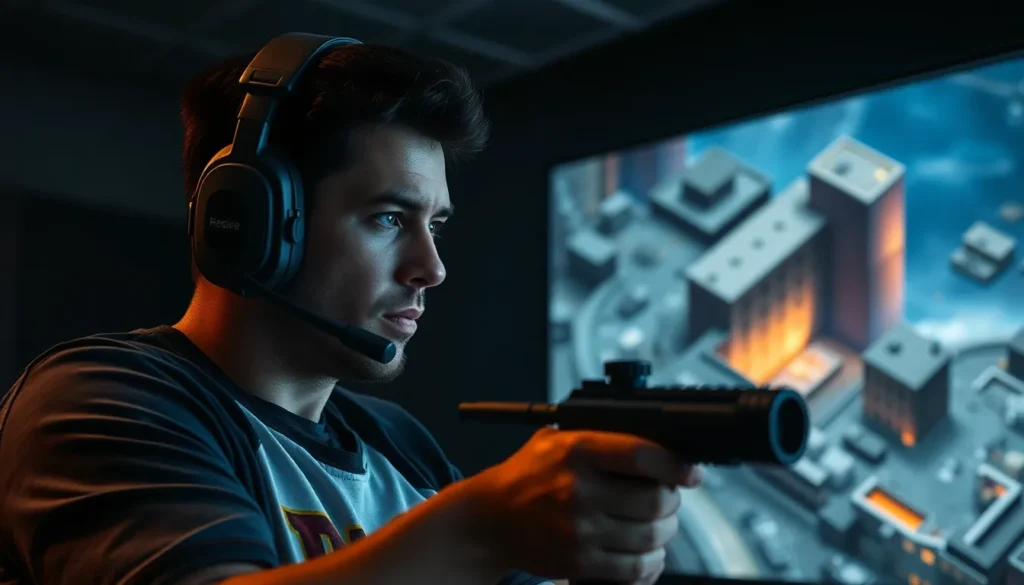Table of Contents
ToggleIn the fast-paced world of Rainbow Six Siege, the meta shifts quicker than a cat on a hot tin roof. One moment, a particular operator reigns supreme, and the next, they’re about as useful as a chocolate teapot. Understanding the current meta is crucial for players looking to climb the ranks and avoid the dreaded matchmaking purgatory.
Overview Of R6S Current Meta
R6S current meta emphasizes flexibility and adaptability in operator selection. Players relying on operators with versatile abilities enhance their chances of success. For example, operators like Jäger and Thermite consistently show high win rates, providing strong utility and firepower.
Map selection plays a critical role in determining effective operators. On certain maps, anchors such as Maestro thrive, while roamers like Vigil perform well at slowing down attackers. Team composition impacts overall strategy, with balanced teams featuring both support and aggressive operators achieving better results.
The dynamics of the current meta shift frequently due to patch updates. Recent operator balancing has affected the picking rates, with some operators rising to prominence while others decrease in effectiveness. For instance, the introduction of new operators often reshapes strategies and compels players to adjust their playstyles accordingly.
Communication among team members remains paramount in executing strategies. Coordinated efforts utilizing intel-gathering operators like IQ or Dokkaebi can create opportunities for decisive plays. Winning strategies involve leveraging the strengths of chosen operators while minimizing their weaknesses.
Adjustments to the meta can also stem from community trends and competitive play. Players closely monitor professional matches and adopt strategies demonstrated by top-tier teams. Regularly updated resources, including tier lists and gameplay analysis, help players stay informed on shifts in the meta.
Ultimately, understanding R6S current meta involves continuous learning and strategic planning. Operators that excel this season may not maintain their strength next season. Emphasis on adaptability enhances a player’s ability to remain competitive.
Key Operator Changes

Operator effectiveness in Rainbow Six Siege sees constant adjustment. Recent updates bring significant changes to both attackers and defenders.
Attacker Updates
Thatcher’s EMP grenades now have a shorter range, making him less central to team compositions. Ace’s Selma charges have received a damage boost, improving their utility against reinforced walls. Zofia’s impact grenades, once a staple, now require more strategic thought as their effectiveness relies on timing. Ying benefits from a cooldown reduction for her Candela devices, allowing for faster engagements. Nomad’s utility remains strong, but players find more success using her to support flanking strategies instead of direct confrontations.
Defender Updates
Maestro has been rebalanced, with his Evil Eye cameras’ damage output reduced, pushing players to rely on them for intel rather than direct confrontations. Jäger continues to be crucial, however, he now takes longer to deploy his Active Defense System. Wamai’s ability shines with improved disk placement, allowing for better control over projectiles. Bandit’s Shock Wire now operates undisrupted by certain gadgets, making him a more versatile choice among defenders. Vigil’s ability to confuse attackers remains strong, but recent buffs to attackers challenge his stealth role effectively.
Map Preferences In The Current Meta
Map preferences play a significant role in defining strategies within the current meta of Rainbow Six Siege. Players must strategize based on map layouts and how specific operators perform in different environments.
Popular Maps
Border, Clubhouse, and Oregon dominate the current competitive scene. Border’s multi-story design allows for both vertical play and strategic rotations. Clubhouse features strong hold points, benefiting anchors and defensive setups. Operators like Jäger often shine in these defense-heavy environments. Oregon, with its favorable angles, encourages aggressive plays while also providing anchor opportunities. Market research shows consistent performance metrics for these maps, indicating they host frequent high-stakes matches.
Map-Specific Operators
Certain operators excel on specific maps due to their unique abilities. For example, Jäger thrives on Border and Clubhouse, providing excellent defense against projectiles. Thermite’s ability to breach reinforced walls proves invaluable on Oregon, allowing attackers to create sightlines. Defenders like Maestro benefit from anchored positions in Clubhouse, extending their utility. Flexible operators, such as Ash, adapt well to various maps, changing strategies mid-game. Each map requires players to select operators based on environmental advantages, pushing teams to coordinate effectively for success.
Gameplay Strategies
Effective gameplay strategies are crucial in the current Rainbow Six Siege meta. Understanding how to adapt is key for success.
Team Coordination
Team coordination stands at the forefront of strategic execution. Players rely on clear communication to execute plans seamlessly. Operators like IQ and Dokkaebi enhance intel gathering, allowing teams to make informed decisions. Utilizing voice chat helps convey enemy positions and potential threats rapidly. Balancing roles across operators fosters a comprehensive approach when attacking or defending. Coordination thrives when players adapt their strategies to respond to teammates’ actions. Learning from professional matches offers practical insights into teamwork dynamics. Adjusting strategies mid-game based on performance can turn the tide in competitive scenarios.
Solo Play Tactics
Solo play tactics emphasize personal skill while managing team dynamics. Individual players must always adapt operator choices to current meta shifts. Select operators with versatility and survivability, such as Jäger or Nomad, to maximize efficiency. Positioning becomes crucial, particularly in unfavorable matchups; players should exploit sightlines and cover effectively. Use sound to anticipate enemy movements, as audio cues provide vital intel when playing solo. Relying on gadgets not only distracts opponents; they also offer opportunities for flanking maneuvers. Successful solo players actively adjust their playstyles based on map layout, ensuring strategic advantages wherever possible.
The Impact Of Season Updates
Season updates significantly influence Rainbow Six Siege’s meta, altering operator effectiveness and gameplay strategies. Operators like Thatcher, Ace, and Zofia saw changes that require players to adjust their tactics. Thatcher’s EMP grenades now feature a reduced range, making timing more critical. Ace’s Selma charges gained a damage boost, offering enhanced breaching options. Zofia’s impact grenades necessitate strategic deployment, increasing their skill ceiling.
On the defensive side, updates have also reshaped strategies. Maestro’s Evil Eye cameras now reduce damage output, prompting players to prioritize intelligence gathering over direct engagement. Jäger maintains his value, although his Active Defense System requires longer deployment times. Wamai’s ability to place disks effectively enhances projectile control, reinforcing the need for careful positioning. Bandit’s Shock Wire operates without interference from specific gadgets, increasing his tactical versatility.
Communication among team members remains essential as meta shifts occur. Strategies that utilize intel-gathering operators like IQ and Dokkaebi rely on clear dialogue. Players often study professional matches, incorporating advanced techniques into their gameplay. Tier lists provide updated insights, helping players select appropriate operators.
Map preferences also shift with each season update. Competitive maps like Border, Clubhouse, and Oregon favor specific operators, demanding strategic adaptations. Jäger thrives in Border and Clubhouse with his reliable positioning, while Thermite’s breaching capacities prove invaluable on Oregon. Adapting to these changes requires players to remain vigilant and informed about effective strategies.
Solo play tactics emphasize personal adaptability. Individual players must consider current meta dynamics, opting for versatile operators. Sound awareness and positioning become critical, allowing players to capitalize on enemy weaknesses. Continuous learning about the evolving meta ensures that operators remain competitive despite ongoing updates.
Staying ahead in the Rainbow Six Siege meta requires constant vigilance and adaptability. Players must embrace the fluid nature of operator effectiveness and map dynamics to enhance their gameplay. By prioritizing communication and team composition, they can navigate the challenges posed by shifting patches and updates.
The current landscape rewards those who can quickly adjust their strategies and operator choices based on the latest trends. As the game evolves, so should their understanding of the meta. Embracing this mindset ensures players remain competitive and ready to tackle any challenge that comes their way.




